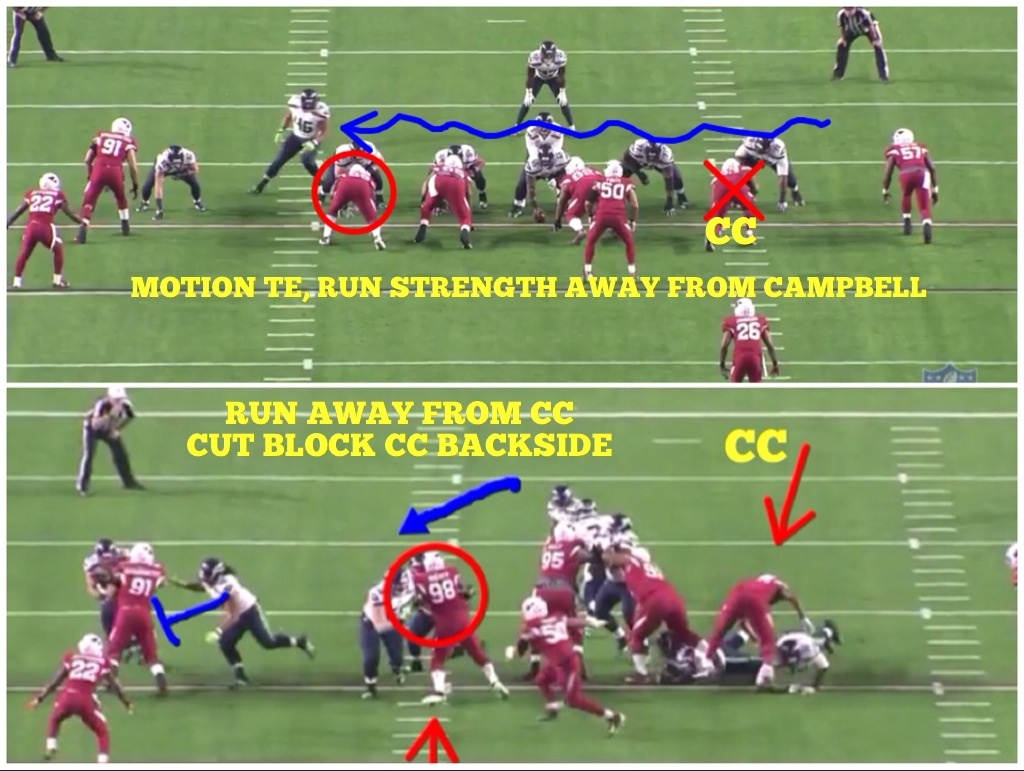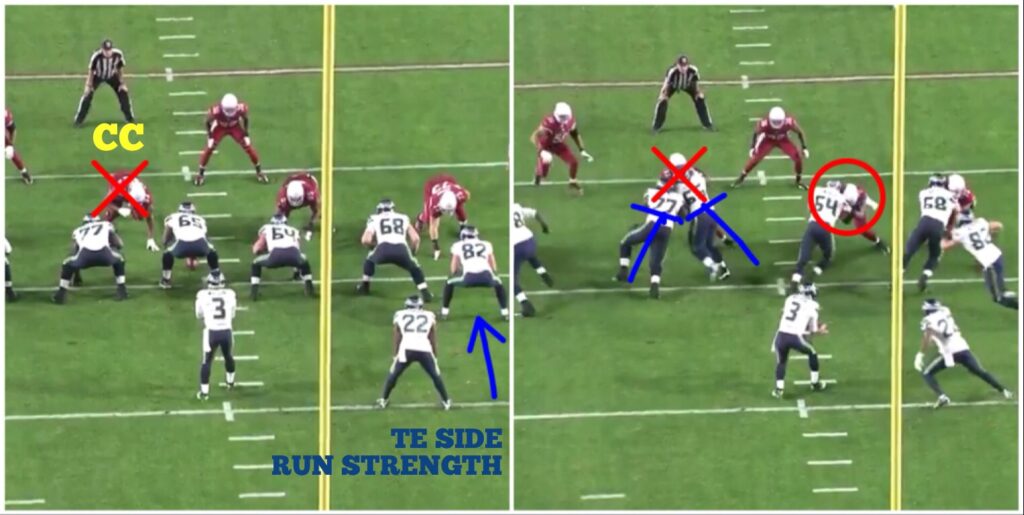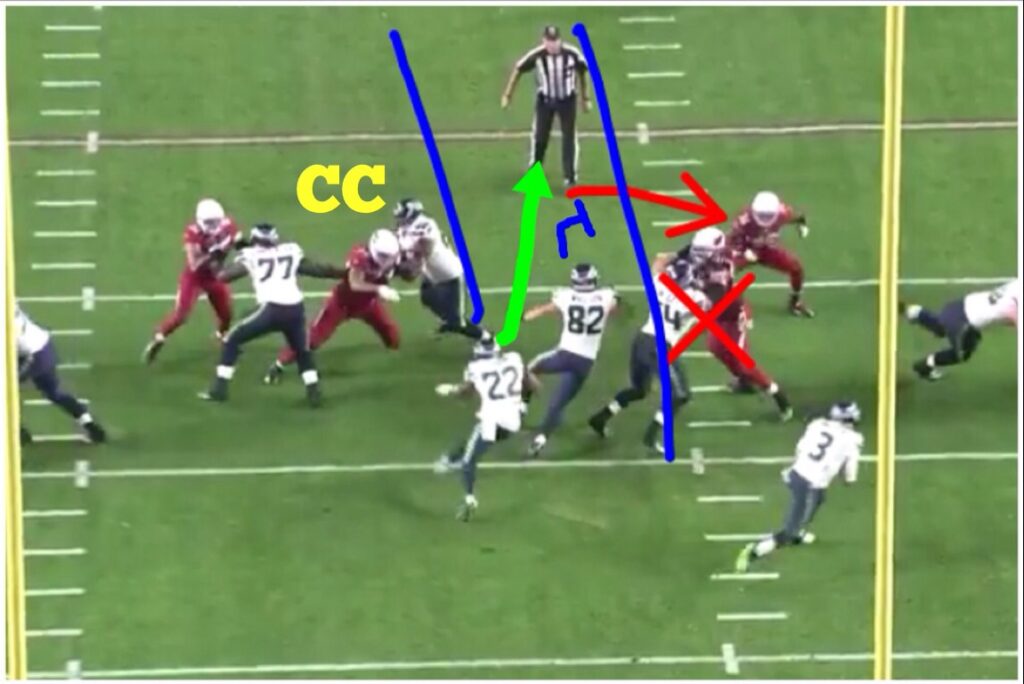Inside Football Look At Scheming For An All-Pro Force
The Arizona Cardinals have faced a season-long challenge in putting points on the board. Yet, they achieved an impressive 11-5 record and won a playoff spot despite a revolving door of quarterbacks reminiscent of a baseball pitching rotation.
When you think of an NFL playoff team struggling to score, you typically envision a defense-driven squad, which holds true for the Cardinals.
However, this defensive-minded team is comprised mainly of individuals who may not be household names, even for those residing in the Southwest.
The standout figure among them is none other than Patrick Peterson, the charismatic cornerback often recognized as the playmaker.
However, Peterson’s performance this season hasn’t reached his usual standards, with occasional lapses in production uncharacteristic of one of the league’s premier cornerbacks.
While Peterson remains a key contributor, the team’s fortunes don’t hinge solely on his performance. Defensive coordinator Todd Bowles has garnered attention across the NFL for his innovative pressure schemes, even drawing consideration for head coaching positions.
Yet, if there’s one player on the Cardinals who can single-handedly change the course of a game, it has to be the towering 6’8″ defensive end, Calais Campbell.
Campbell, a quiet presence who earned a 2nd-Team All-Pro nod, has been the heart and soul of the Arizona squad, especially since defensive tackle Darnell Dockett suffered an ACL injury in August.
When you hear “defensive end” in today’s NFL, you likely think of sack statistics.
However, that’s not Campbell’s primary role. He’s more akin to a force of nature in the midst of a 3-4 defensive end position within Arizona’s gap-based scheme, somewhat similar to Pittsburgh’s approach.
In simpler terms, despite being labeled as a “defensive end,” Campbell often finds himself battling in the interior of the offensive line.
His play disrupts both passing and rushing plays because of his remarkable height and length for the position. He acts as a power rusher who extends at precisely the right moment, becoming an imposing obstacle for quarterbacks to navigate around.

A successful play involving Campbell doesn’t always involve a flashy one-on-one edge victory against an offensive tackle.
Instead, it often leaves offensive linemen, running backs, and the quarterback sprawled on the ground, resembling the aftermath of an explosion in the backfield.
His presence makes life challenging for opponents on his side of the ball, and most offenses choose to steer clear of his territory to avoid adverse outcomes.
Nevertheless, on December 21st, against the Seattle Seahawks, the seemingly impenetrable Cardinals’ defense finally showed cracks.
Arizona had maintained a streak of defensive performances, keeping opponents’ scores typically under 20 points and sometimes even below 10.
Yet, the Seahawks managed to explode for 35 points, with the most notable feat being their ability to amass 267 rushing yards.
While there were some explosive plays that contributed to this statistic, Seattle consistently found success on the ground by adhering to a relatively straightforward formula:
- Organize formations to direct runs away from Campbell’s side.
- Plan the point of attack (POA) in a direction away from Campbell.
- When running at Campbell, only do so with double teams, preferably executing cutback plays that reverse toward the double-team.
Not every NFL team follows this formula, but the Carolina Panthers adopt a similar ground-oriented, scheme-driven approach, which mirrors Arizona’s challenges in matchups against NFC West rivals like Seattle and San Francisco.
Carolina favors pulling offensive linemen and employing misdirection and read-scheme elements, resulting in a run approach that differs somewhat from the Seahawks.
Nevertheless, the opportunity to integrate these fundamental concepts into their own run game preferences presents a straightforward blueprint for a successful NFL offensive game plan.
The following sequences showcase how Seattle adheres to these three fundamental rules. Seattle initially shifts the tight end’s position. Before the motion, the run strength is aligned to Campbell’s side, indicated as CC.
This suggests that additional motion is forthcoming or that it might be a passing play, leaving the tight end for extra protection.
The likelihood of the run strength remaining on Campbell’s side and the play proceeding in that direction is low. Over the past two seasons, ample game footage illustrates that running directly at Campbell is often an exercise in futility.

The lower section of the previous image illustrates the most prevalent strategy adopted by teams.
It’s imperative to ensure that the play’s design steers clear of Campbell’s side before employing a cut-block on his backside to hinder his pursuit and prevent him from disrupting cutback runs.
Campbell poses a significant challenge when confronted head-on, but his towering 6’8″ frame makes him susceptible to backside cut blocks (not to be confused with illegal chop blocks, like the one he received from Julius Thomas earlier in the season).
Running backs like Carolina’s Jonathan Stewart, known for his nimble footwork and propensity for bouncing out and cutting back, are likely coached to stay on the play side during this matchup.
In a game like this, Campbell’s formidable presence on the backside is simply too risky to test repeatedly.
The subsequent image shows the third principle outlined in the guidelines: allowing Campbell to be part of the point of attack on a running play, but only when he’s positioned away from the run strength and facing a double-team.
Attempting cutback runs that lead back to a single-blocked Campbell is a futile endeavor, and doubling down on run strength isn’t advisable either, as it’s the expected direction for the run, potentially leading to an extra defender getting involved and forcing your blocker to abandon doubling Campbell or risk a hit from a free defender.

When facing backside doubles, Seattle effectively used tactics to disrupt Campbell’s bullish charges, forming a barrier before creating lanes in a defense that frequently gambles with pressure schemes and overplays to the run strength.

Will the Carolina Panthers execute these precise plays today?
Not necessarily, but it’s expected that these fundamental principles must be adhered to because there’s a full season’s worth of evidence showcasing how not to approach this supremely disruptive defensive lineman.
The Arizona-Carolina matchup hinges on trench warfare, with Calais Campbell standing as the trench-dwelling force capable of dismantling an offensive game plan unless he is handled in a particular manner.

